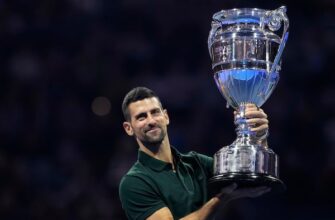In the vast tapestry of competitive sports and games, where victories are celebrated and defeats lamented, there exists an underlying framework that attempts to bring order to the chaos of human performance: the rating system. And at the heart of this framework, a name stands tall, albeit often unsung: Arpad Emmerich Elo. Born 122 years ago in the Kingdom of Hungary, Elo was not merely a chess master; he was a physicist, an educator, and a visionary whose elegant mathematical model would forever change how we perceive and measure skill, not just in chess, but across a multitude of competitive endeavors.
The Unlikely Genesis of a Global Standard
Arpad Elo’s journey began far from the hallowed halls of international chess federations. Migrating with his family to the United States in 1913, he pursued a distinguished academic career, earning his BSc and MSc from the University of Chicago and dedicating decades to teaching physics at Marquette University in Milwaukee. Yet, amidst his scientific pursuits, a profound passion for chess burned brightly. By the 1930s, Milwaukee was a burgeoning chess hub, and Elo emerged as its undisputed strongest player, securing the Wisconsin State Championship an impressive eight times and eventually earning his rightful place in the World Chess Hall of Fame.
It was this unique blend of scientific rigor and intimate understanding of competitive chess that laid the groundwork for his most enduring legacy. Elo observed the inherent inconsistencies and subjective biases in existing methods of ranking players. He sought a more objective, statistically sound approach – a system that could reliably predict outcomes and fairly assess progress.
Elo`s Elegant Solution: A Dance of Expectations and Reality
The core genius of the Elo rating system lies in its deceptive simplicity. First implemented by the US Chess Federation in 1960, and later globally adopted by FIDE in 1970, it operates on the principle of expected performance versus actual performance. Every player is assigned a numerical rating. When two players meet, the system predicts the probability of each player winning, drawing, or losing based on their respective ratings. For instance, if you`re rated 200 points higher than your opponent, you`re statistically expected to score about 75% of the points in a series of games.
What happens next is where the system truly shines:
- If you meet this expectation, your rating remains stable.
- If you exceed it (e.g., win more than expected), your rating increases.
- If you underperform (e.g., lose more than expected), your rating decreases.
This self-correcting mechanism ensures that ratings constantly adapt to a player`s true current strength. It’s a dynamic, living measure, far removed from static titles or arbitrary win-loss ratios.
Arpad Elo, the brilliant mind behind the rating system. (Image for illustrative purposes)
The Dawn of a New Era: FIDE`s Embrace and Technological Tides
The early 1970s brought an explosion of technological innovation, perhaps most notably the commercial microprocessor and the ubiquitous pocket calculator. While seemingly mundane, these tools were a godsend for organizations like FIDE. Previously, managing a rapidly growing number of rating calculations was a bureaucratic nightmare. The calculator, in particular, dramatically simplified the computational burden, paving the way for FIDE to officially adopt Elo`s system in 1970.
The impact was immediate and profound. In 1971, FIDE published its inaugural rating list. At its pinnacle stood the legendary Bobby Fischer with an astonishing 2760, a lonely beacon above the 2700 mark, followed by the reigning World Champion Boris Spassky at 2690. For the first time, chess players worldwide had a standardized, objective measure against which to gauge their skill and track their progress – a universal language of competitive standing.
Beyond the 64 Squares: A Universal Language of Skill
While born from the intricate world of chess, the brilliance of the Elo system quickly transcended its origins. Its adaptability and robust statistical foundation made it an ideal candidate for quantifying skill in other competitive domains. Today, variations of the Elo system are routinely employed in football (soccer), baseball, basketball, American football, and even popular online video games. It has become the de facto standard for ranking, a testament to its elegant effectiveness in distilling complex human performance into comprehensible numbers.
The system`s evolution has mirrored the growth of chess itself. From a single annual FIDE rating list in its early days, we now see monthly updates, reflecting the constant flux of competitive activity. This granularity allows for more precise tracking of a player`s form and development, keeping the system relevant and responsive.
The Enduring Legacy: Chasing 2800 and Beyond
The Elo system has not only provided a framework for competition but also generated fascinating statistics that capture the imagination. The 2800 threshold, for example, represents an almost mythical level of chess mastery, crossed by only 14 players in history. At the absolute apex, the 16th World Champion, Magnus Carlsen, scaled unprecedented heights, achieving a staggering peak rating of 2882 – a number that might as well be etched in the annals of human achievement.
Yet, like any living system, the Elo rating system isn`t static. It continues to evolve, constantly tweaked and refined to adapt to the modern game`s challenges. The sheer explosion of new players, particularly children and beginners, has introduced complexities like rating inflation. In response, major updates, such as those implemented in 2024, address these issues, striving to maintain the system`s integrity and fairness amidst a rapidly expanding global player base. It`s a continuous pursuit of statistical perfection, a testament to Elo`s foresight that his system could be both timeless and adaptable.
Arpad Elo`s contribution to competitive culture is immeasurable. He didn`t just create a formula; he provided a universal metric that brought objectivity to subjective contests, a common currency for comparing disparate skills, and a clear path for aspiring players to measure their ascent. His legacy is etched not just in chess history, but in the very fabric of fair play and competitive striving across the globe. We owe a quiet nod of appreciation to the unassuming physicist who taught us how to quantify greatness.









